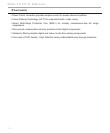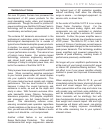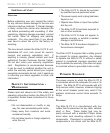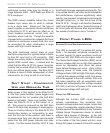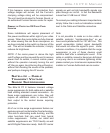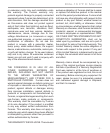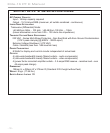
Elite-16 PF E Manual
- 6 -
continuous current draw may be limited to a
range between 2900 - 3500 Watts per Elite-16
PF E employed.
The RMS current available before the circuit
breaker trips varies due to what is referred
to as a vector load. Simply put, the type of
power supplies or electronic circuits connected
to the Elite-16 PF E will have an effect on its
circuit breakers perceived current load, and
therefore, when it will trip. Though the benets
of power factor correction far outweigh the small
reduction in continuous current draw, this must
be accounted for when constructing a large
system with high current demands.
The total continuous current draw of most
electronic components is typically listed in Watts
by their AC input cord or AC connector. Watt
ratings are simply added to determine the total
system RMS current draw. It should also be
noted that the Elite-16 PF E’s power correction
circuitry has no actual effect on the power drawn
from your utilities’ power meter. The Elite-16 PF
E draws a mere 8 Watts independent of other
components, so it may be left on at all times.
soFt start - contInuous
use and break-In tIme
When power is rst applied to the Elite-16 PF
E, (the front panel breaker- power toggle must
be switched to the “on” position) the Soft Start
feature is activated. There is an audible “clack”
when the Elite-16 PF E is rst turned on or
off. This sound is produced by the Soft Start
circuit’s 30 Amp relay engaging or disengaging.
There is virtually nothing in the Elite-16 PF E’s
construction, design, or componentry to wear
over the life time of the product, and there is
no power draw from your electric service meter
aside from the LED power indicator and relay
circuits. For this reason the Elite-16 PF E may
be left with its power engaged permanently. This
is an added benet, as many audio/videophiles
nd performance improves signicantly when
leaving low-powered components permanently
charged (turned on). In fact, this is true of the
Elite-16 PF E. Though it will function awlessly
right from its shipping carton, the performance of
its circuit parts will improve after approximately
two weeks of continuous use or “break-in.”
Front panel leds
extreme Voltage shutdoWn IndIcator:
This LED is normally off. It monitors AC wiring
faults – for example, accidental connection to
an open neutral (in some countries) could put
well over 300 VAC RMS onto the mains outlet.
The Series Multi-stage Protection (SMP) circuit
senses voltages that are so high that operation
would be impossible and shuts the power
down before damage can occur. Upon initially
applying power to these units, the Extreme
Voltage indicator LED will light if the input voltage
is above the extreme voltage cutoff, and power
will not be applied to the unit’s outlets. If the unit
has been operating with an acceptable input
voltage and subsequently that voltage exceeds
270 VAC, it will shut off power to the outlet and
the Extreme Voltage LED will light.
protectIon ok IndIcator:
Although the Furman SMP circuit assures
virtually maintenance free protection from
transient voltage spikes and surges, nature has
a way of occasionally creating electrical forces
that are beyond the capabilities of any Transient
Voltage Surge Suppression device to absorb
without some degree of damage. In the rare
instance that this occurs, the blue LED located
in the center of the front panel will dim, even
though AC power is present at the unit’s outputs.




